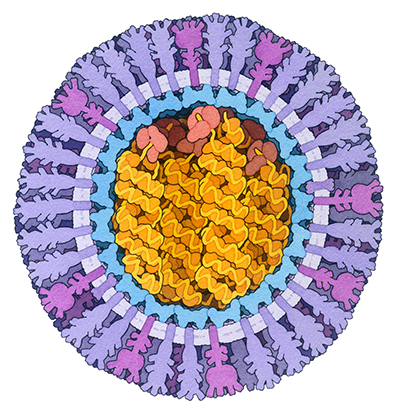Molecular Landscapes by David S. Goodsell
Influenza Virus, 2024
Acknowledgement: Illustration by David S. Goodsell, RCSB Protein Data Bank. doi: 10.2210/rcsb_pdb/goodsell-gallery-049
Cross section through an influenza virion. It is surrounded by a lipid bilayer membrane (light purple) filled with hemagglutinin (purple), neuraminidase (magenta), and a few M2 proteins (small purple proteins). M1 matrix protein (blue) lines the inner side of the membrane. RNA-dependent RNA polymerase (red) is bound to the genomic RNA strands (yellow), which are protected in a helical complex with nucleoprotein (orange).




